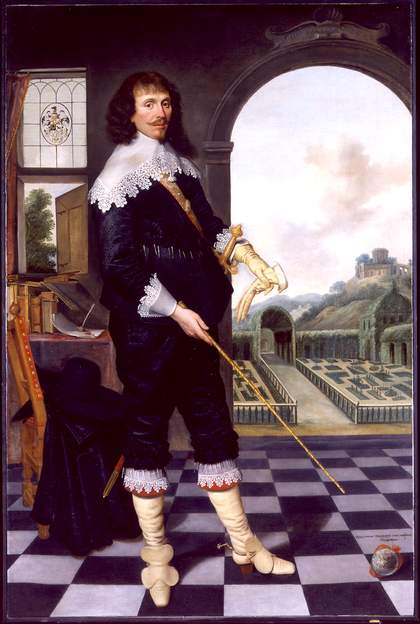
Fig.1
British School 17th century
Portrait of William Style of Langley 1636
Tate
T02308
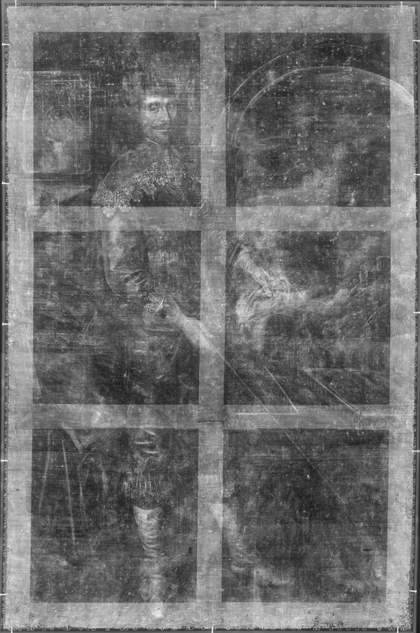
Fig.2
X-radiograph of Portrait of William Style of Langley 1636
This painting is in oil on canvas measuring 2051 x 1359 mm (fig.1). The single piece of plain woven, linen canvas has 12 vertical and 16 horizontal threads per square centimetre. There are evenly spaced slubs throughout. The tacking edges on the bottom and upright edges have been removed but a small part remains in place at the upper left edge. The X-radiograph (fig.2) shows limited cusping in the canvas weave at all edges.1 The canvas has a lining of modern synthetic resin attaching a fine linen canvas and an adjustable stretcher fitted at the same date.
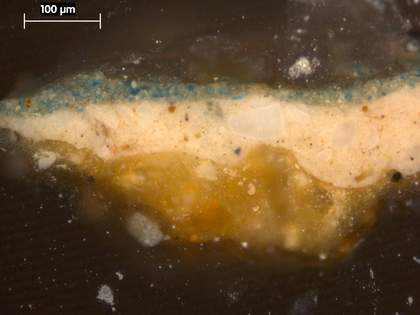
Fig.3
Cross-section taken from the green landscape architecture at the right edge, photographed at x225 magnification. From the bottom upwards: chalk rich ground, 30 to 150 microns thick; beige priming, 60 to 110 microns thick; green paint, 20 to 40 microns thick
The ground is a low density, light golden brown layer. Analysis indicates a little chalk but no lead white, the major component being pipeclay and gypsum.2 The ground is covered over with pale beige priming, which extends over the entire picture plane. The colour is obtained by a mixture of brown earth, black and lead white (fig.3).
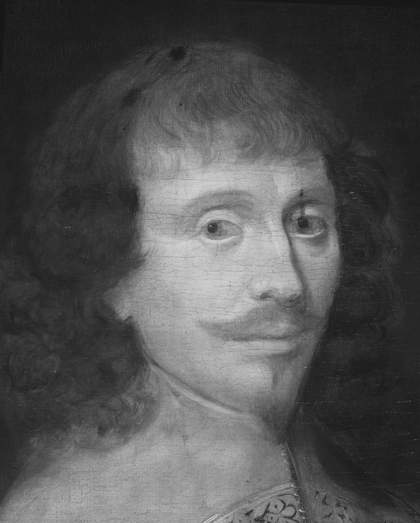
Fig.4
Infrared reflectograph detail of the head of Portrait of William Style of Langley 1636

Fig.5
Infrared reflectograph detail of the gloved hand in Portrait of William Style of Langley 1636. Note the artist’s pentimenti

Fig.6
Infrared reflectograph detail of the chairback in Portrait of William Style of Langley 1636
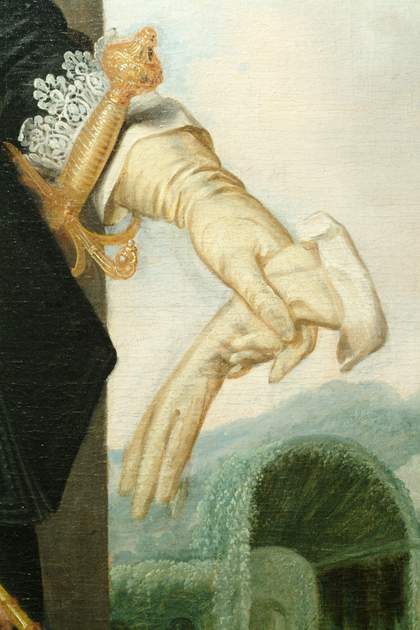
Fig.7
Detail of the gloved hand shown in fig.5 as an infrared reflectograph detail, showing changes of position for the gloves (pentimenti)
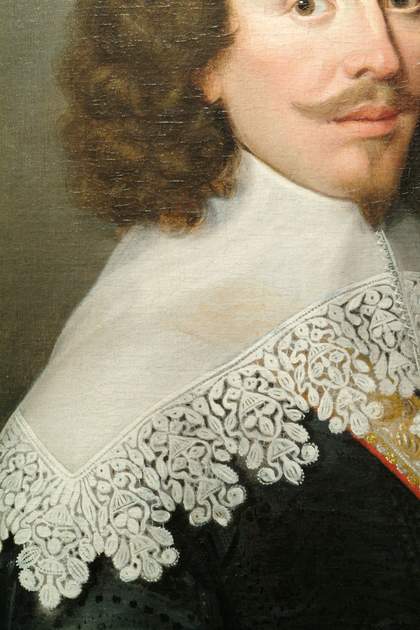
Fig.8
Detail of the head and shoulder of Portrait of William Style of Langley 1636
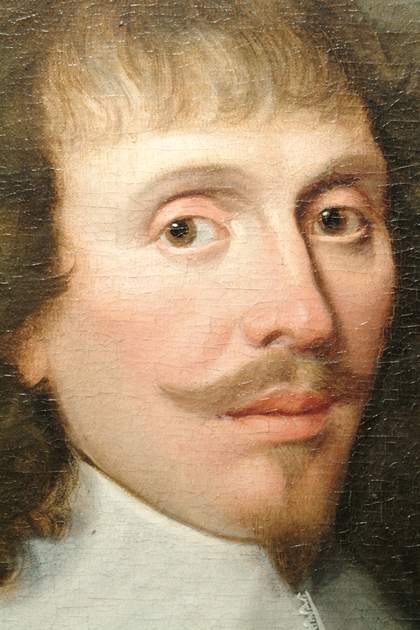
Fig.9
Detail of the sitter’s head

Fig.10
Detail of the sitter’s right eye
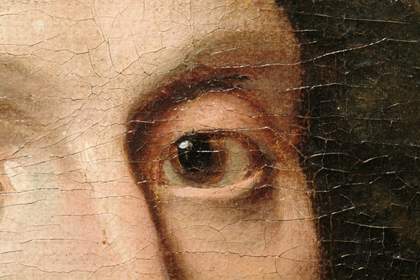
Fig.11
Detail of the sitter’s left eye
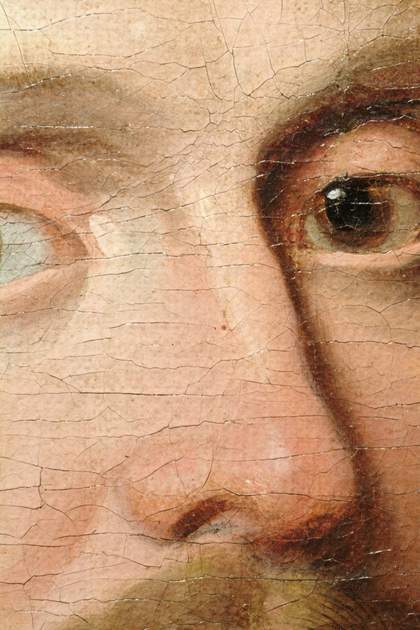
Fig.12
Detail of the sitter’s nose
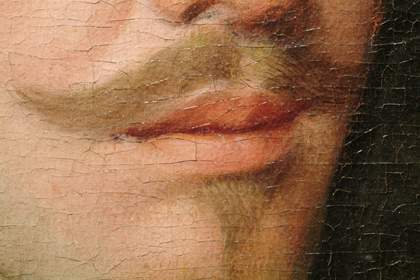
Fig.13
Detail of the sitter’s mouth
No complete underdrawing was detected in infrared reflectography (figs.4–6), although a number of minor alterations to the composition were revealed, along with some clarification of the marked pentimenti round the gloved hand (figs.5 and 7). Small adjustments to the design were made throughout as the artist redefined outlines by overlapping the edges of the main forms: for example, the sky through the arch on the right extends beneath the architecture. Close examination of the face reveals that the features were drawn in with thin brown paint, later strengthened with a red lake mixture for the shadows (figs.8–13).
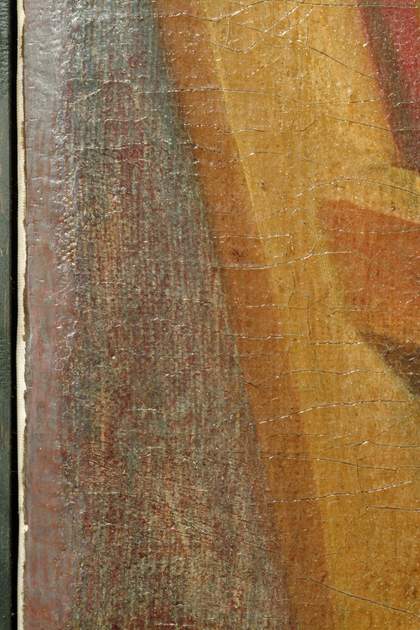
Fig.14
Detail of the chairback and red tablecloth at the left edge, showing fading of the red lake glaze
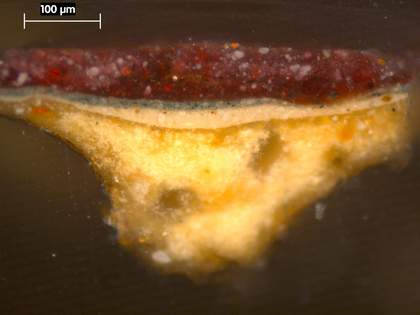
Fig.15
Cross-section through an adjacent area to that shown in fig. 14, photographed at x225 magnification. From the bottom upwards: ground; beige priming; opaque grey underpaint; red lake glaze
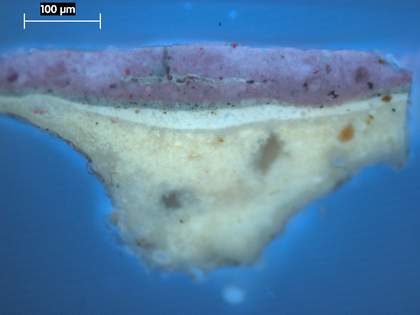
Fig.16
The same cross-section as in fig. 15, photographed at x225 magnification in ultraviolet light. Note the fluorescence in the red glaze, indicating that its binding medium may contain resin as well as oil
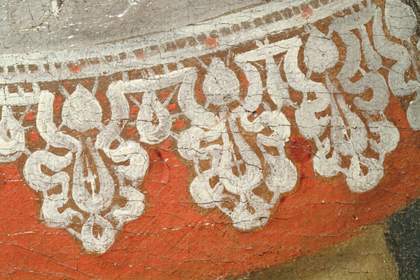
Fig.17
Detail of the lacework on the top of the boot; the red lake glaze over the opaque vermilion paint has faded except where applied thickly
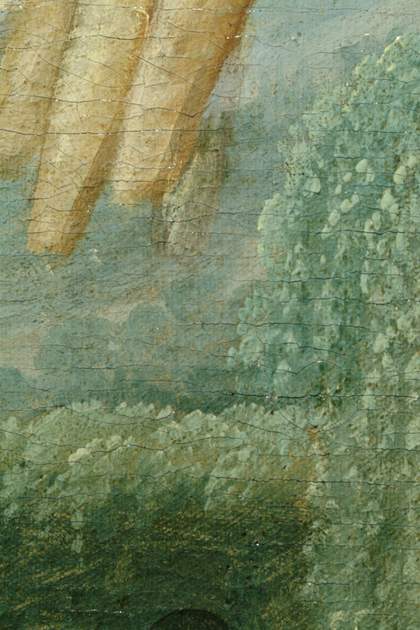
Fig.18
Detail of foliage and pentimento in thumb
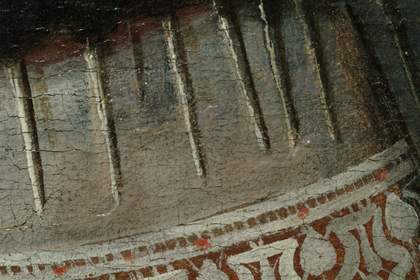
Fig.19
Detail of the metal points above the lace on the boot top
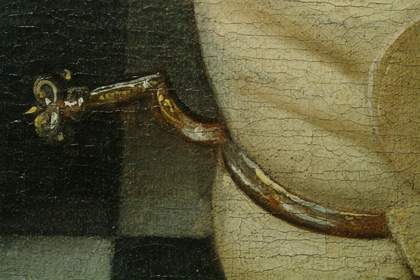
Fig.20
Detail of the spur
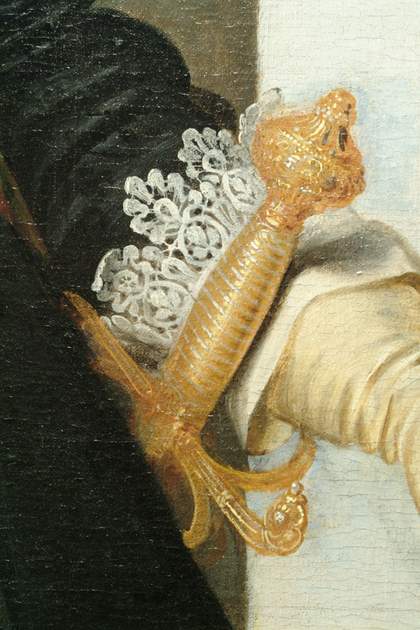
Fig.21
Detail of the sleeve cuff and sword hilt
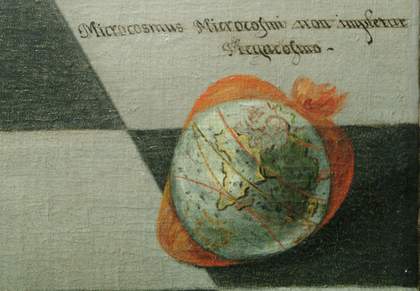
Fig.22
Detail of the globe and inscription
The paint was applied smoothly all over. It is mainly opaque, although some areas have translucent glazes applied over opaque underpainting. This can be seen in figs.14–16, which show a glaze of aluminium-based red lake plus vermilion, gypsum, pipeclay and bone black on top of opaque grey underpainting. In areas exposed to light the red lake has faded somewhat (figs.14 and 17). The sky is a simple, opaque application of blue paint made from lead white, smalt and pipeclay. The green foliage (fig.18) was mixed from azurite, lead white, yellow earth colours, translucent brown earth colour, vermilion, lead-tin yellow and pipeclay. The black costume (figs.19−21) appears to have a thin grey underpainting, over which tones of back and dark grey were applied wet-in-wet. The pigments in it are bone black, lead white, and traces of ultramarine with what might be kaolin as an extender. The yellow of the metal studs on the chairback were based on lead-tin yellow, whereas the yellow decoration of the curtain at the left edge was mixed from yellow ochre, lead white, vermilion and pipeclay. The small globe to which style points (fig.22) was painted on top of the tiled floor, not into a reserve.
July 2021
